F1: Bahrain GP Preview
Formula One’s bold new era has arrived. In Bahrain, a radical new technical template aimed at better, closer racing will be put to the test for the very first time. And the fast and flowing Bahrain International Circuit is the perfect venue to kick off proceedings.
The start of a new season is always a big moment. Lots of expectations, months of work behind the scenes, long nights of winter testing – all converge into this one race, the start of nine months of competition towards the ultimate accolade.
For the fourth time in Formula 1 history, the Bahrain International Circuit will host the season curtain-raiser, following on from 2006, 2010 and 2021. It will be the opening round of a record-breaking 23-race calendar, including anticipated returns to several fan favorites absent since the pandemic, while Formula 1 will welcome Miami for the first time in May.
Everyone will be watching how badly the sandbagging Mercedes team beats the competition with their superior cars and how George Russell compares to Valtteri Bottas as Lewis Hamilton’s new water boy…….or will the water boy shock the veteran.
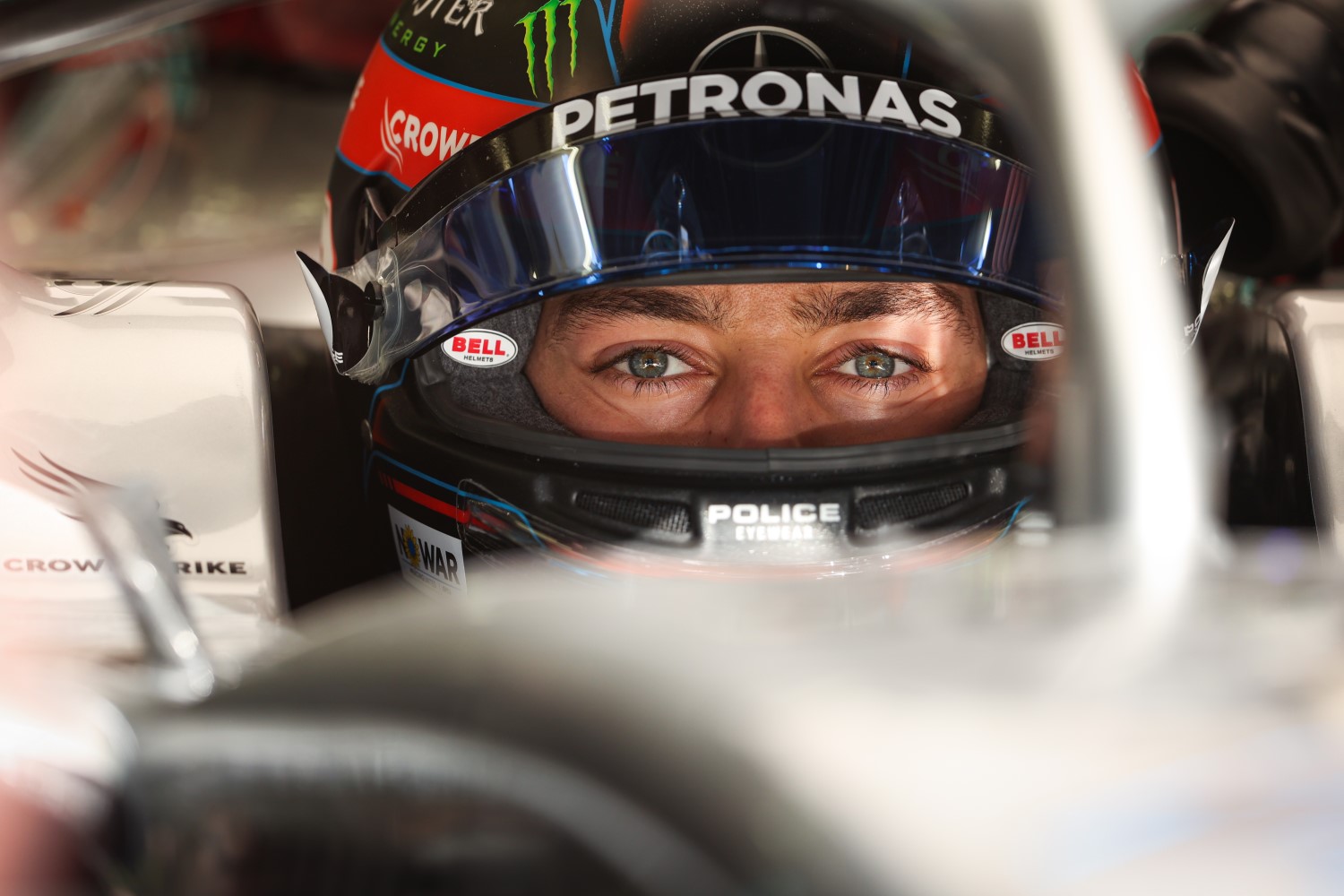
Talking Points
Defending World Champion Max Verstappen says, “We learned a lot at testing in Barcelona and Bahrain, I’m very excited to turn our attention to racing now, it’s a whole new era for the sport and anything can happen.
“The focus is to bring the grid together and make it easier to follow, I hope we see that in the first race. Everything is so new, so there are a lot of unknowns heading into the first race of the season. I’m looking forward to seeing where we are compared to the rest of the grid come qualifying on Saturday.
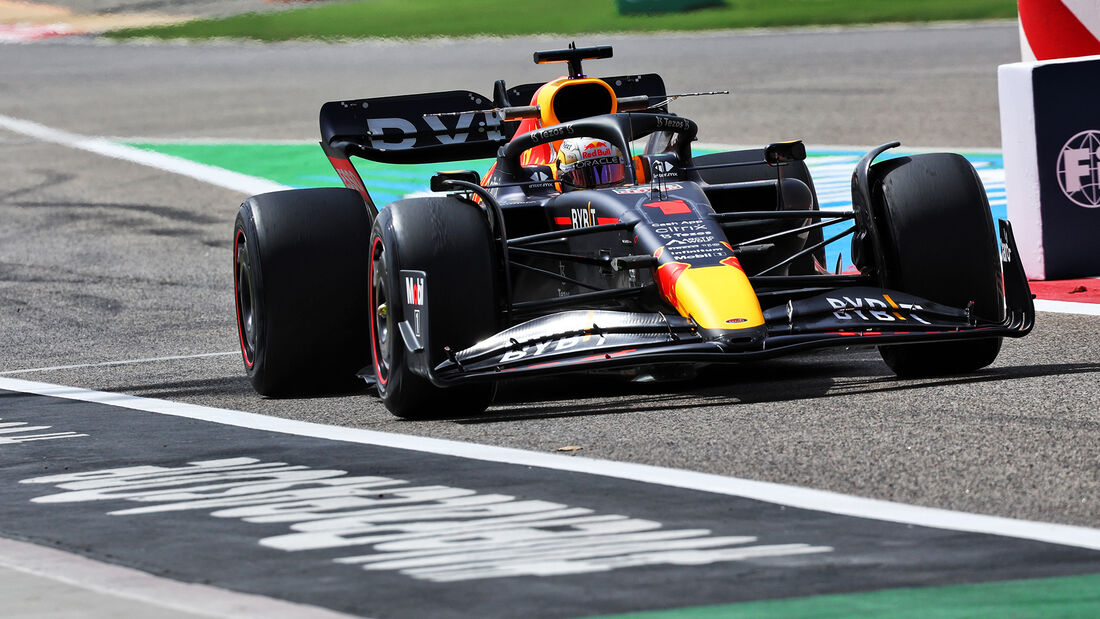
“The car looks good and as a Team we are in a good place. The most important thing for us in Bahrain is to have a stable weekend without too many issues, and we hope to score a good number of points.”
“These new Formula One cars are so incredibly different to their predecessors,” says Sebastian Vettel.
“We’ve spent the past weeks learning as much about them as we can, and I’m looking forward to racing a ground-effect car for the first time this weekend. Everything is new in Formula One and I think we’re looking at a very tight battle, and some very close gaps, between all the teams. There’s a lot to play for – and that’s F1 at its best.”
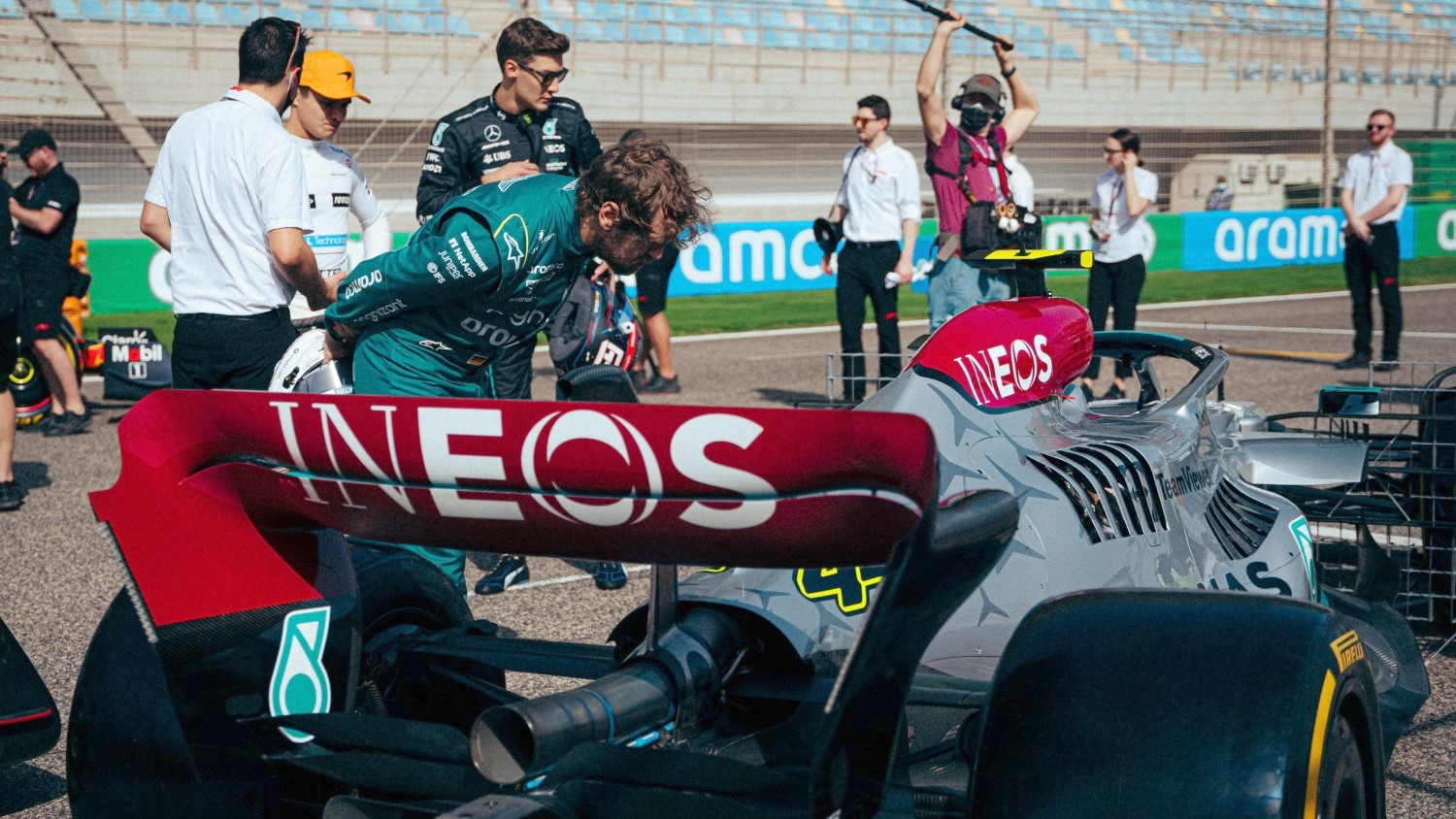
“Every area of the car has changed in terms of what you have to get used to: on the aero side there’s a lot to understand, how the underside of the car performs now and the new tires,” says Pierre Gasly.
“So, it is very complex and at this stage there are still a lot of questions concerning how to make the car work as well as possible. These are things we will continue to work on at the first few races of the season, starting this weekend.
“I think with the new cars, it is easier to follow another one closely. At the Bahrain test I had a nice little fight with Lewis Hamilton for six laps and it was interesting to see how the car behaved and also how the tires felt while following another car, how much you slide. Overall, I think it will be easier to fight and to overtake than in the past, which is a really good thing.
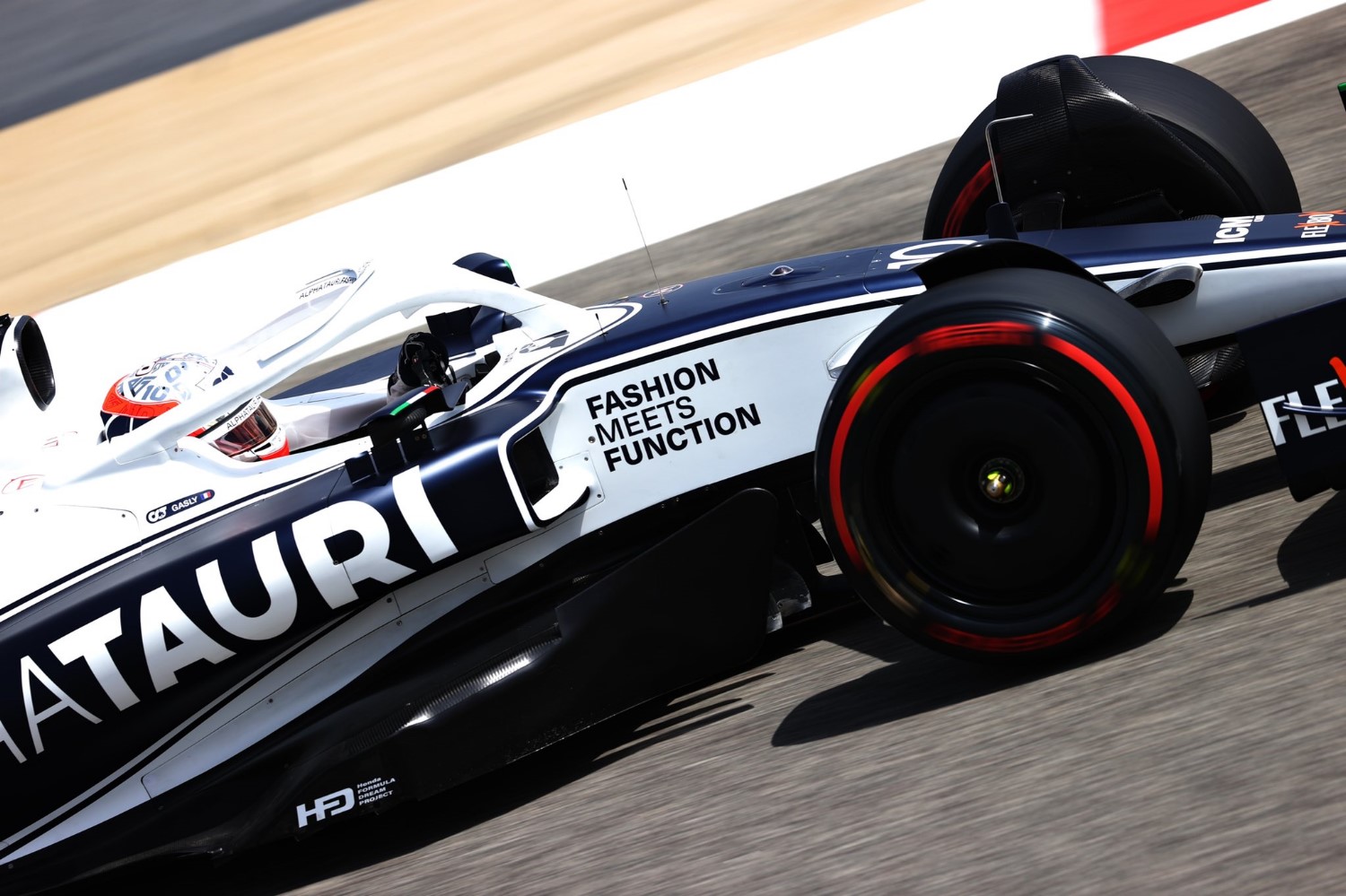
Fact File: Bahrain Grand Prix
- The Bahrain International Circuit is located in the middle of the desert, on what was formerly a camel farm. It features 1,120 palm trees!
- It may be located in a desert, but sand doesn’t present much of an issue for the teams and cars in Bahrain, and the track surface cleans up quickly.
- The Bahrain Grand Prix is a twilight race, starting at sunset and finishing in nighttime. FP2 and qualifying also take place in the evening, so 495 lighting posts are used to illuminate the track.
- Despite the new F1 weekend format, FP1 and FP3 still take place in daylight in Bahrain, and therefore hold little value in terms of car balance and set-up work for qualifying and the race, which take place at night. However, they can still prove useful for work on test items or understanding the tires. FP2 is therefore a crucial session for all the teams, as it is the one chance we have to run the car in similar conditions to those experienced in qualifying and the race.
- The focus for the set-up of the car is on tuning it for low and medium-speed corners. This is because the high-speed sections of track are easily taken flat-out. But mechanical grip is crucial out of the slow corners. This is the opposite to the focus areas we have for tracks such as Silverstone, where high-speed corner performance is key.
- We often see higher tire degradation in Bahrain because it has one of the roughest surfaces of the season and we expect to have more degradation compared to last year, due to the technical changes to the car and the new tires for the F1 2022 season.
- The trickiest corner on the track is Turn 10. It has a long, combined corner entry that tightens and drops away at the apex and is blind over a crest. Drivers have to apply the brakes while also completing the wide corner arc of Turn 9. All these factors mean the front-left tire goes light and this increases the risk of a lock-up.
- Bahrain is always a punishing track for the brakes, with seven braking events and three classified as ‘heavy’ by our engineers (which means the driver is braking for 0.4 seconds or longer, with 4G or more). As we found during pre-season testing, the Bahrain track has also got bumpier and the cars are not as smooth to drive, so that also makes braking trickier.
- Because of the various changes to the weekend format, this now means there is less time for mechanics to work on the cars and less engineering time, due to the earlier curfew. So, more emphasis is put on hitting the ground running with good preparation and simulation work.
- With more emphasis being on the pre-weekend preparations, this means correlation between the simulation tools and the track is crucial – making sure the simulation appropriately represents the real car. But the gap between the test and the race is much smaller compared to usual, making it tougher to understand the learnings from the test and bring those into the pre-race preparations.
- The new technical regulations with their drastically different floor and diffuser mean we’ll see more sparks flying from the underside of the car – which’ll look spectacular under the lights in Bahrain!
- Because of the new regulations and vastly different cars for 2022, the performance of the cars through the corners will change, too. For example, we expect the cars to take Turn 4 in Bahrain at 115 km/h in 2022, compared to 135 km/h last year. Similarly, a high-speed corner like Turn 12 will now be taken at 240 km/h, compared to 265 km/h.
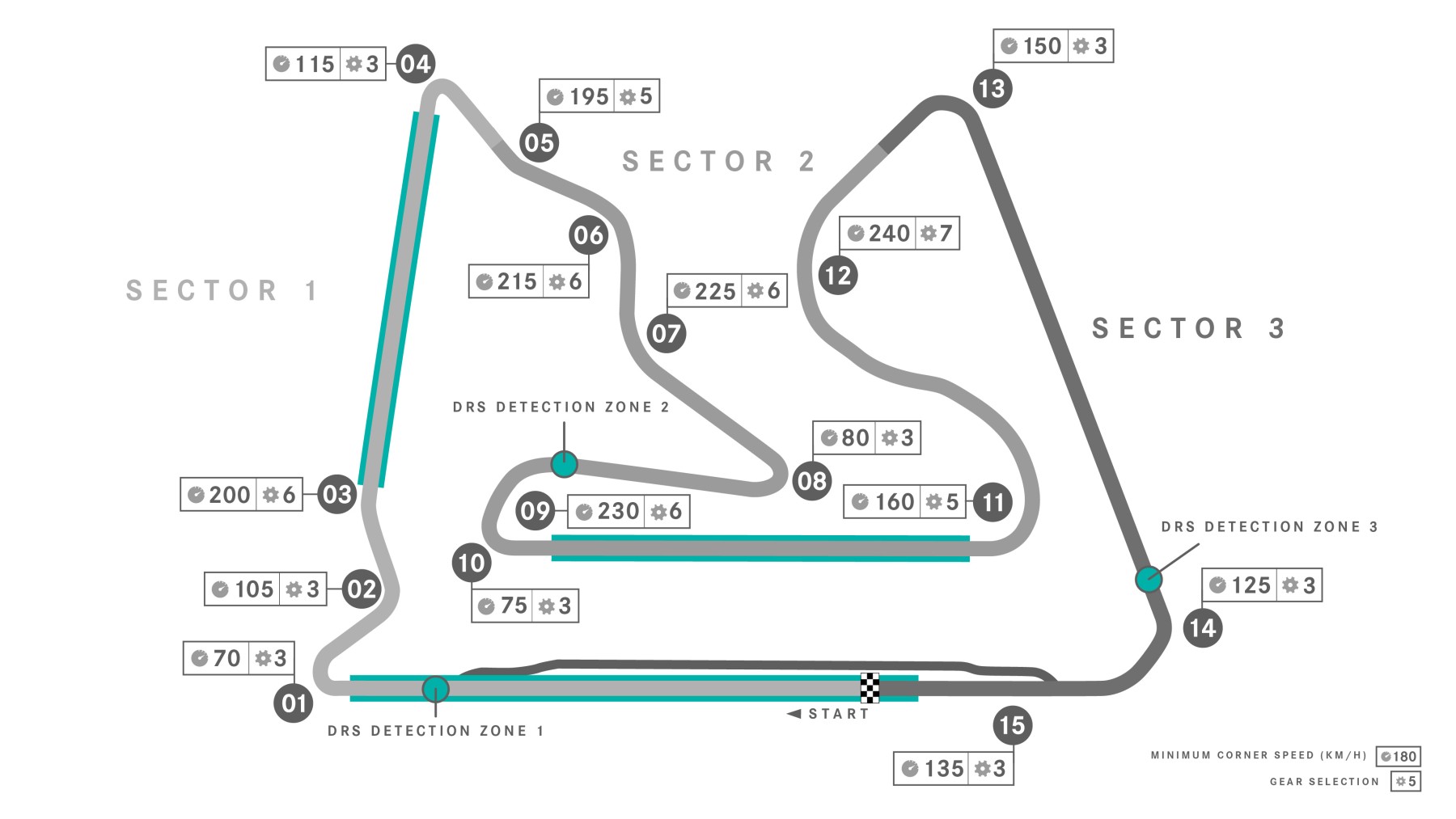
What to look for
Tires – There are several new factors for the team to consider for 2022. New regs means all drivers now have a free choice of starting tire compound, potentially opening up more strategic variance. Pirelli has also opted to go one step harder in its allocation compared to last year’s race, bringing the C1, C2 and C3. The switch from 13 inch to 18 means the car feels much sharper, snappier in high-speed corners but with a bigger range of control through those corners.
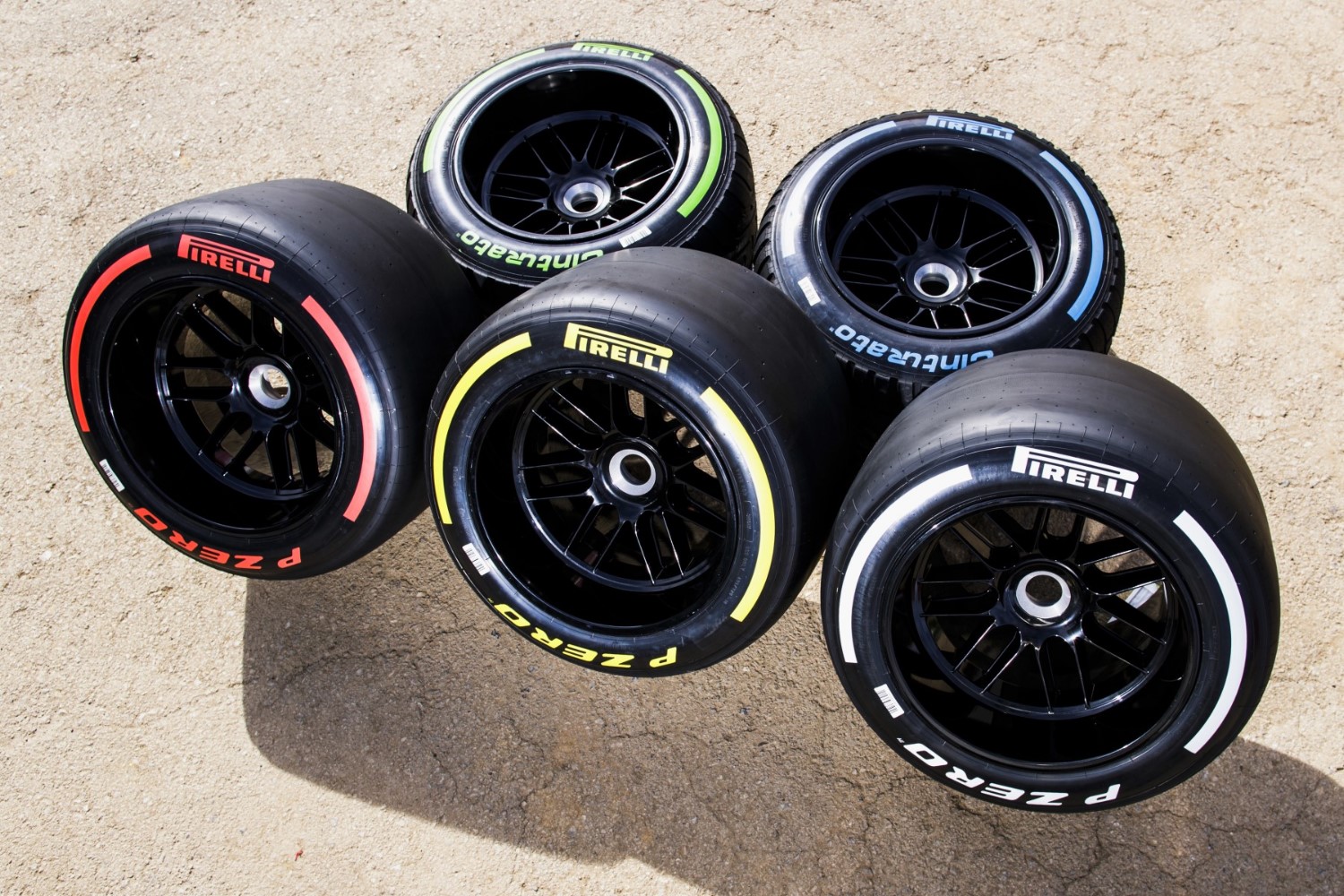
Porpoising – We did see some major porpoising with the news cars in preseason testing, which was one of the limitations in terms of developing the car at the tests. It will be interesting to see which teams still have this problem come race weekend
Safety Cars – It’s not just tire shake-ups that could influence the race’s direction because Bahrain is prone to early and late Safety Car periods. A Safety Car interruption has happened in each of the last five Bahrain Grands Prix, occurring within the opening or final five laps in four of those events.
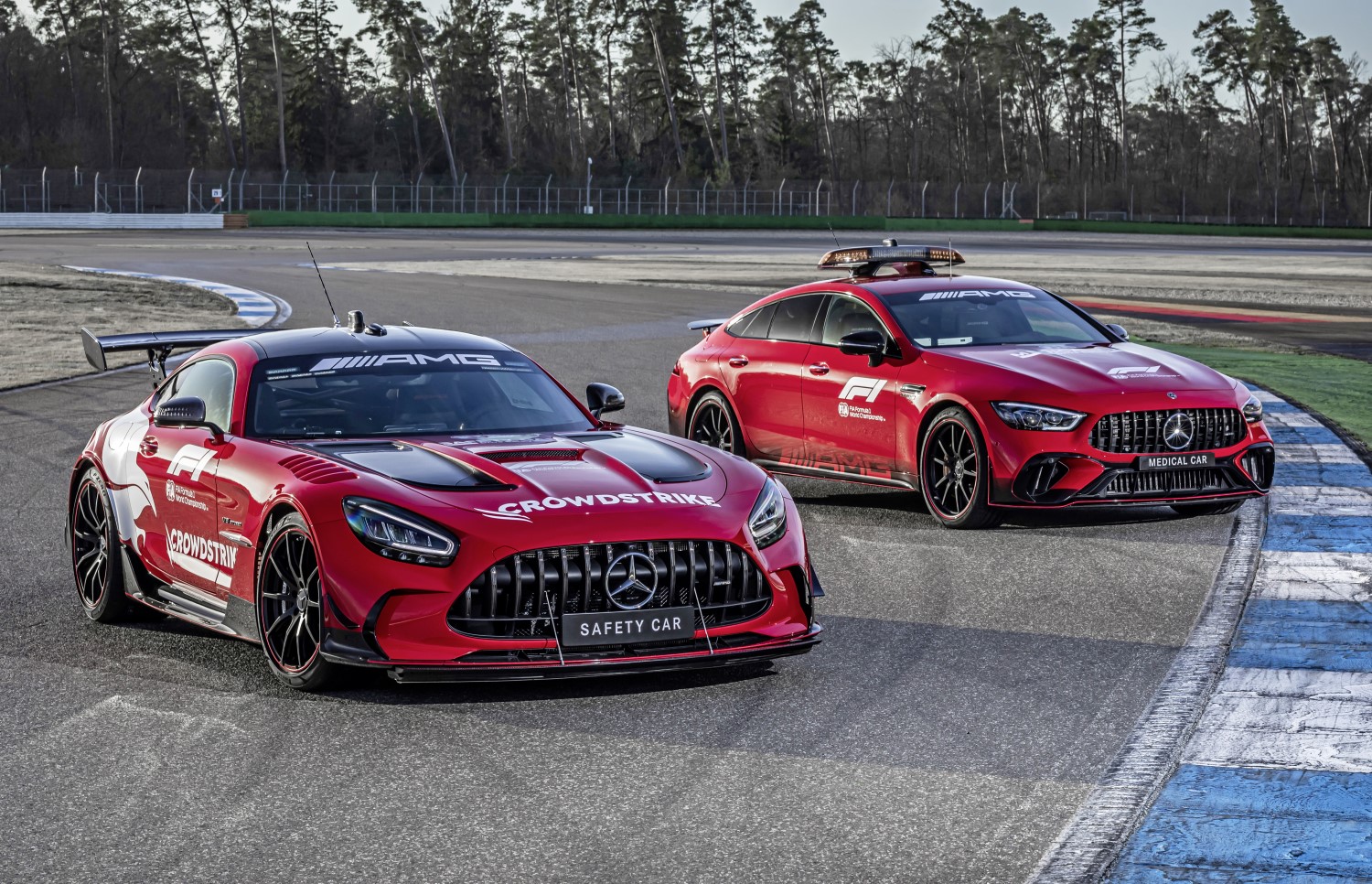
Overtaking – These new cars appear to be able to follow more closely through corners but benefit less from the slipstream along the straights. Bahrain’s three DRS zones should therefore prove beneficial. In 2021, there were 55 overtakes following the first lap. A key focus for engineers early in the season will be analyzing the difference in overtaking compared to previous campaigns.
Track Conditions – It’s tough from a tire management perspective as the temperatures are high and track is very rough; teams also have the added challenge of understanding how the 18-inch Pirellis cope with those conditions. The track is tricky because, as we saw in testing, it’s very windy, sandy and hot which are tough conditions to contend with.
Unlocking The Lap
Two key corners can make or break a lap around Sakhir’s 5.412km Bahrain International Circuit.
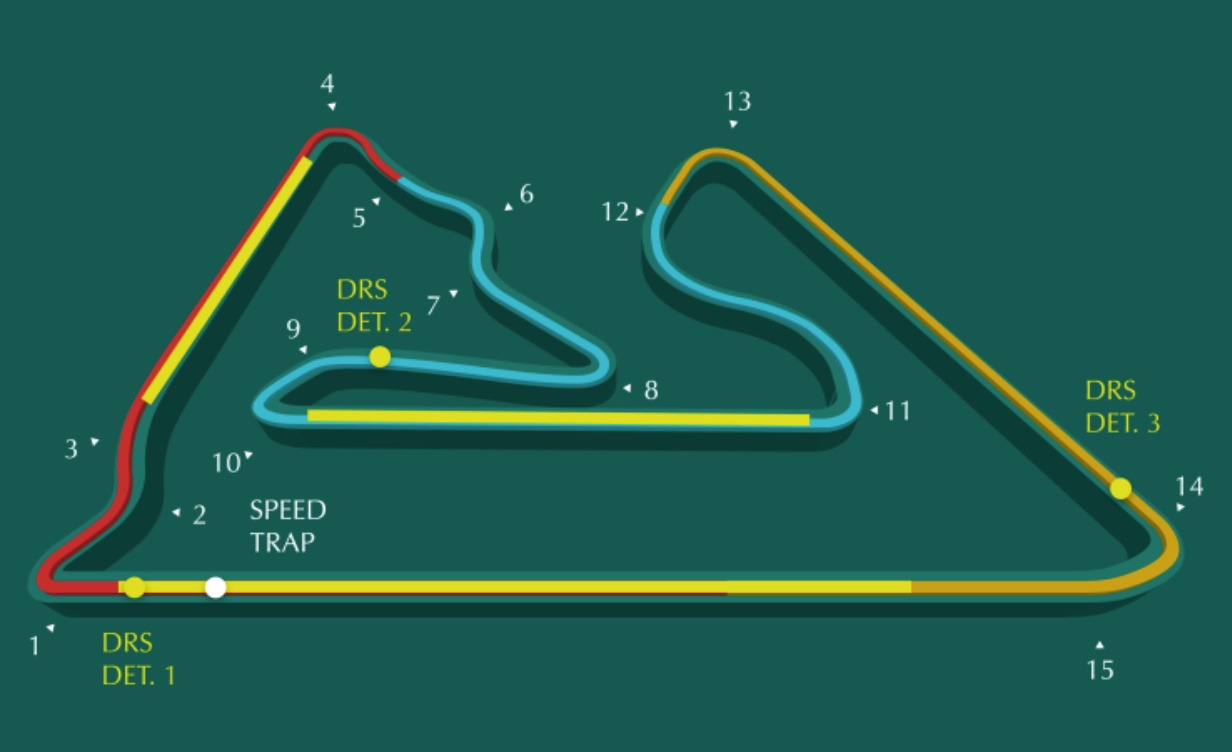
The first corner in Bahrain is crucial: blasting down a 1.2km straight, the 120m braking zone is particularly long, with drivers needing to shed roughly 241km/h (150mph). Getting the approach right is essential as it has a knock-on to Turns Two and Three and, often, can set up a pass into Turn Four. This is arguably the busiest part of the lap.
Turns 9-10 may look straightforward, but this combo is one of the most challenging corners on the whole calendar. Turn Nine is a flat-out kink, which reduces the load on the left-front tire, but Turn 10 arrives quickly and requires plenty of mechanical grip. With the heavier, ‘lazier’ cars, expect to see lots of understeering moments at the exit.
Odds to Win Race
Numbers shown are winnings on a $100 bet. +200 means 2:1 odds
|
Driver
|
Odds
|
|
Max Verstappen
|
+200
|
|
Lewis Hamilton
|
+200
|
|
Charles Leclerc
|
+550
|
|
Carlos Sainz Jr.
|
+800
|
|
George Russell
|
+900
|
|
Sergio Perez
|
+2000
|
|
Lando Norris
|
+2800
|
|
Daniel Ricciardo
|
+6500
|
|
Pierre Gasly
|
+6500
|
|
Fernando Alonso
|
+8000
|
|
The Rest
|
Out to lunch
|
The first race of the season is so difficult to handicap because F1 teams, especially the ones at the top, are known for sandbagging testing sessions in order to keep things close to the chest. It is hard to tell just how well or how poorly certain cars are performing when you’re unsure if the drivers are giving it their all.
Does Mercedes really not have a championship-winning car this year, or is Toto Wolff playing games once again? Does Haas actually have a car that won’t get lapped this season?
Red Bull
Just like in Barcelona, Red Bull started slowly in the Bahrain testing session. Most people were preparing to call it a day when Verstappen pulled off his fastest lap time with 20 minutes to go on Day 3.
Then with just eight minutes to go, he went .2 seconds faster to overtake Leclerc with a final time of 1m 31.720s. The team so far has downplayed the impressive testing results, but you can clearly see the confidence running throughout the camp.
The car’s unique upgrades, including sculpted side pods, seem to be paying off so far. Max has now eclipsed Lewis in the opening odds for the Bahrain GP, at +200 to win the race.
Mercedes
It’s the general consensus that Mercedes has been holding back so far. Although Lewis is making the rounds telling the press that the team’s current car “won’t be competing for wins”, many doubt the sincerity of those remarks.
On the flip side, other drivers that have tested behind the car agree it doesn’t look well balanced. The team completed 384 laps around the track in Bahrain, but still seem to be struggling with porpoising (bouncing), despite changes to the side pods.
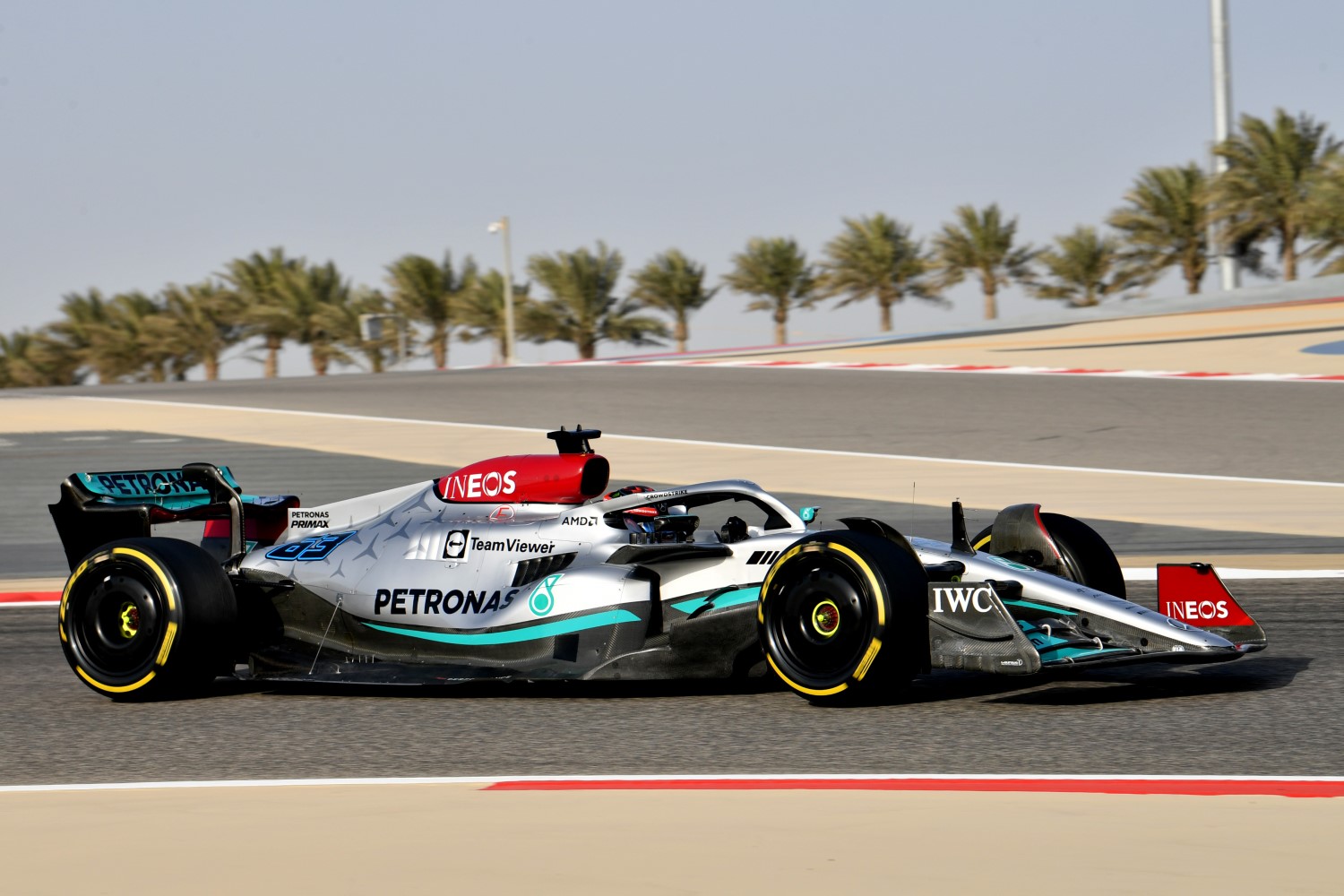
The lack of dominance in testing has caused Hamilton to drop below Verstappen in the Bahrain GP betting odds. Lewis is now second on the board, with odds ranging from +200 to +250.
Sportsbooks seem to think the team will figure things out throughout the season, as Hamilton still tops the odds boards to win the championship this year.
Ferrari
Ferrari has been consistent throughout both the Barcelona and Bahrain testing sessions, putting up impressive lap times in both. The team couldn’t have asked for better pre-season performance.
Everyone seems to agree that the car looks fast. When it comes to reliability, there have been no issues that cause major concern. The team is still dealing with its fair share of porpoising, but it is improving as the weeks go on.
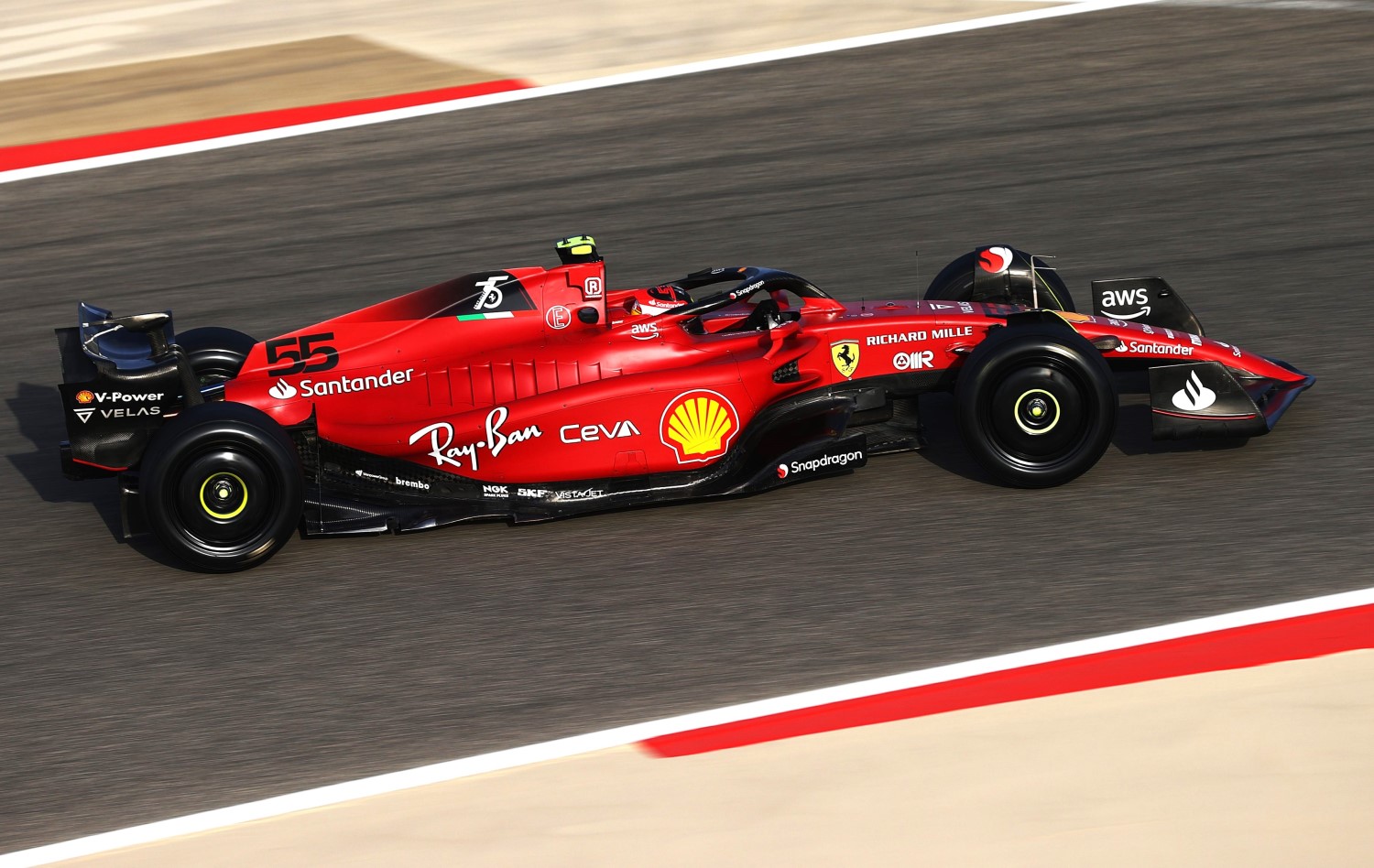
Leclerc commented that the bounce has gone down significantly since Barcelona as team engineers continue to figure out how to control it.
There has been a lot of speculation that Ferrari has finally done what it needs to bridge the gap with Mercedes and Red Bull.
With the team’s solid and consistent performance throughout the past few weeks, there is some value in taking Leclerc to finish in the top three at +120 at BetMGM Sportsbook.
McClaren
Things did not go as planned for McClaren this past weekend. Daniel Ricciardo was out due to a positive COVID-19 test. The team is hopeful he will be back in time for the race, but not having testing sessions on the desert track before the season starts isn’t optimal.
His teammate Lando Norris dealt with breaking and overheating issues that cost him a ton of testing time as well. With these problems, the team will likely fall in the middle of the pack for the first race of the season.
Haas
It wouldn’t be Haas if there weren’t problems. The team missed the first day of testing due to freight delays but were able to make some of that up with late testing sessions on Day 2.
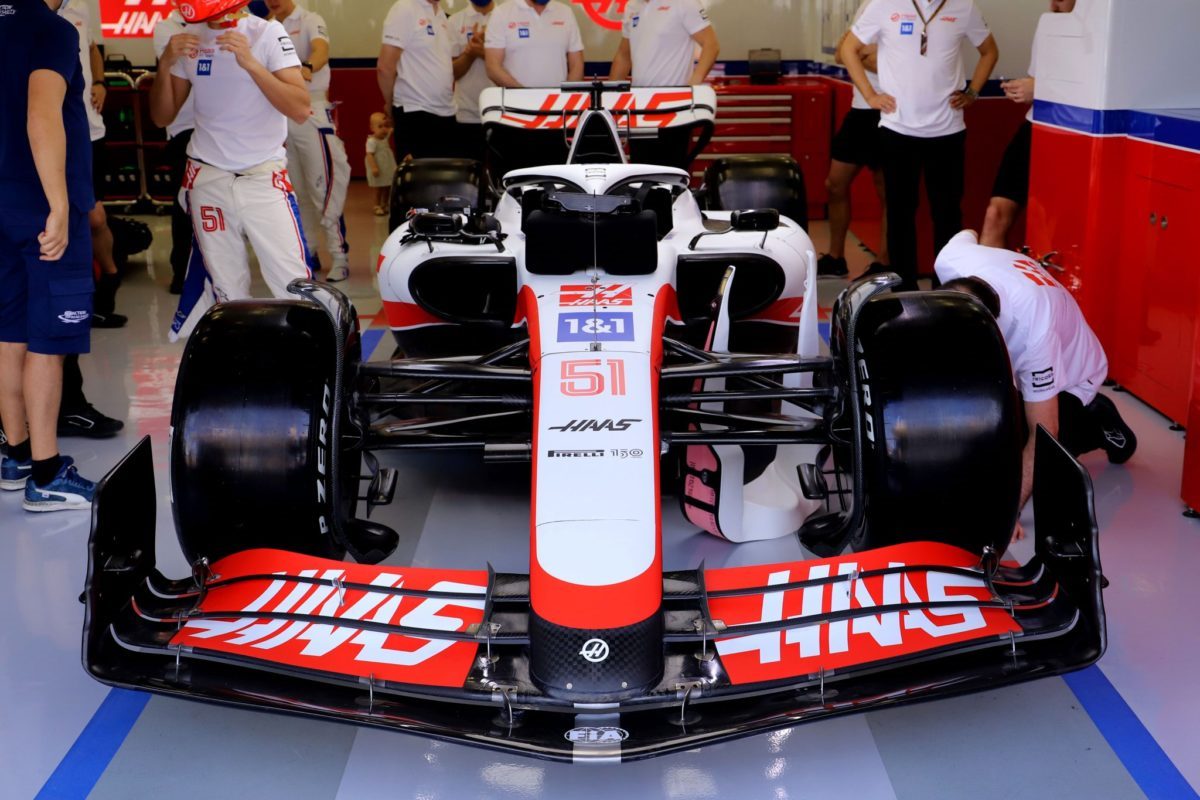
The best part was that once the car actually got on the track, it looked fast. In a turn of events nobody expected, Schumacher put up the second-fastest time at Bahrain testing.
Is this the year Haas finally doesn’t get lapped? Nobody is saying this is a winning team just yet, but it would be nice to see them be competitive this season.
